Main menu
Common skin conditions

NEWS
Join DermNet PRO
Read more
Quick links
Infections Diagnosis and testing
Author: Professor Balachandra Ankad, Department of Dermatology, S Nijalingappa Medical College, Bagalkot-587103, Karnataka, India. Copy edited by Gus Mitchell. December 2020.
Introduction Clinical features Dermoscopic features Differential diagnoses Histological explanation
Pityriasis versicolor is a mild chronic infection of the skin caused by lipophilic yeast of the genus Malassezia.
Pityriasis versicolor presents as discrete or confluent, hyperpigmented, hypopigmented, or pink macules and patches with a fine surface scale, most commonly on the upper trunk. In skin of colour, the infected skin appears paler than the normal surrounding skin.
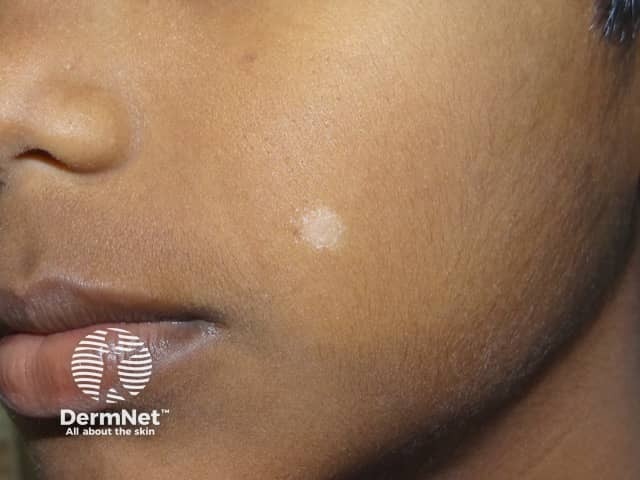
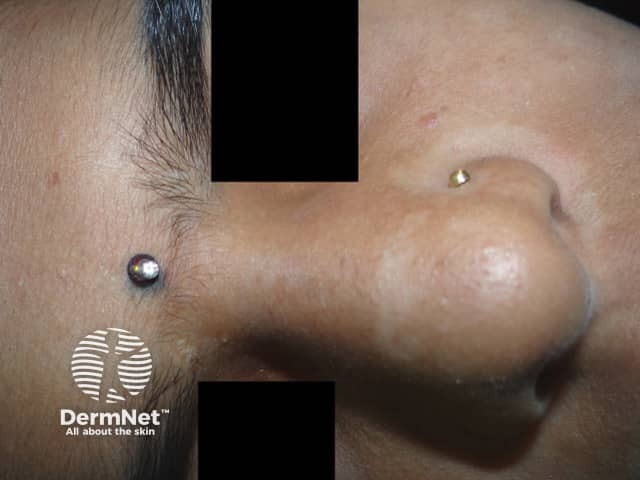

[see also Pityriasis versicolor images]
Most dermoscopy studies of pityriasis versicolor have been reported in patients with Fitzpatrick IV and V dark skin types. The patches are generally poorly defined, with non-uniform pigmentation and fine white scale. Distribution of the scale can be diffuse or focal, in skin lines, around hair follicles, or at the periphery of the lesion.
Dermoscopy of hypopigmented pityriasis versicolor shows diffuse white structureless areas with a faint pigment network. A patchy pattern of scale is seen more commonly in hypopigmented pityriasis versicolor compared to the hyperpigmented macules. Fine scales in the natural skin creases can result in a ‘wire-fence’ pattern. On stretching the skin, the scales break into two parts along the skin cleavage lines and are referred to as ‘double edged’ scale.
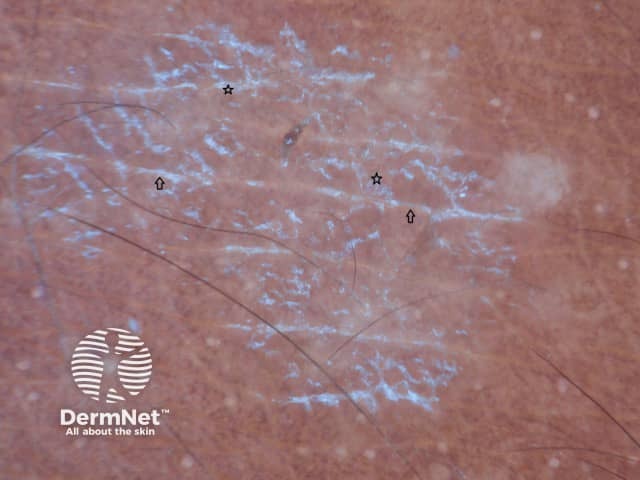
White scale in skin lines (arrows) and diffuse pattern (stars)
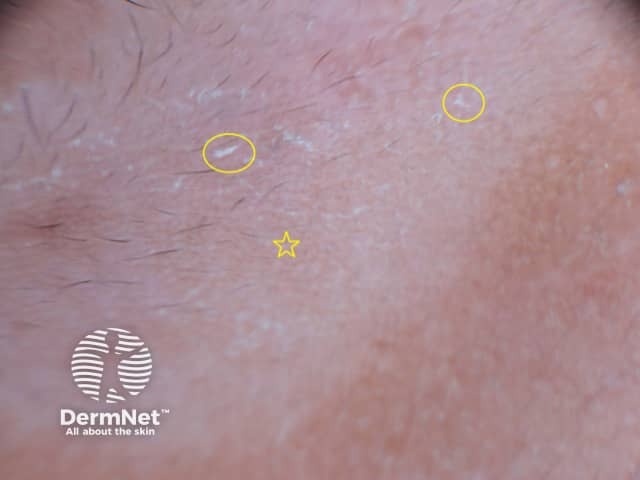
Pigment network (star) and focal white scale (circles)
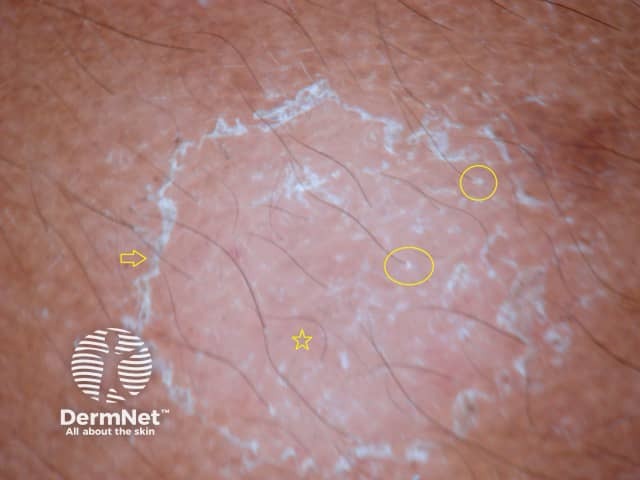
Pigment network (star), perifollicular scale (circles), peripheral scale (arrow)
Dermoscopy of hyperpigmented patches of pityriasis versicolor demonstrates diffuse or perifollicular fine whitish scale and a pigmented network of brown stripes or diffuse brownish pigmentation.
Vitiligo dermoscopy: a milky white structureless area with a diffuse ‘white glow’ due to the absence of a pigment network. Vitiligo has a well-defined border which can be hyperpigmented. The pigment network is usually absent. Hairs within the area are often white with loss of perifollicular pigmentation. [see Dermoscopy of vitiligo]
Pityriasis alba dermoscopy: poorly-defined pale area with fine surface scale scattered in no particular pattern.
Progressive macular hypomelanosis dermoscopy: poorly-defined white macules with faint reticular pigmentation. It is not usually scaly, but white scale is occasionally found with a focal distribution.
Skin biopsy of pityriasis versicolor shows mild hyperkeratosis which corresponds with the white scale. Elongated rete ridges have a mild increase in basal layer pigmentation producing the faint background pigment network on dermoscopy [see Pityriasis versicolor pathology].